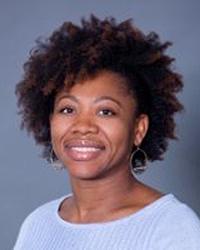Samantha Francois is asking how we can make communities safer. She is going into neighborhoods across five Louisiana parishes and asking crucial questions to gauge residents' perceptions of local agencies, like the police and criminal justice courts, around ensuring public safety. Read more.
Because violence disproportionately affects black communities, this project also involves Samantha going into neighborhoods with high concentrations of black residents and asking these crucial questions to gauge perceptions of current public safety agencies, like the police and criminal justice courts, around ensuring public safety:
- What does public safety mean to you? What does it look like?
- Who is responsible for public safety?
- What does it mean for you to feel safe?
Samantha is excited to understand more from New Orleans residents themselves about the ways people feel like their safety is at risk and how they promote safety and prevent violence using community assets and strengths. Preliminary data she has gathered from Orleans Parish indicates people’s sense of safety coming from having a secure environment, like having a reliable flood, sewer and water system in a city so prone to flooding. She also learned that the over-incarceration of citizens makes people feel unsafe and that, for them, a sense of safety comes from multiple angles, like quality healthcare systems, education, religious institutions, and public safety agencies. Additionally, some residents emphasized that a well-functioning police force and criminal justice system is important for public safety and reducing community violence but that there are many ways individuals, families and neighborhoods have the power to reduce violence as well.
Samantha views this work as natural legacy of her collaboration with another VPI faculty member, Stacy Overstreet, in 2012 on a project that discusses the influence of historically under-resourced communities on racial gaps in academic achievement. You can access the article they published together here - Where we live: The unexpected influence of urban neighborhoods on the academic performance of African American adolescents.
Samantha is hopeful that this current project will add to the body of evidence that can be leveraged to advocate for and inform policy as well as inspire more bottom-up change to prevent violence in New Orleans.

